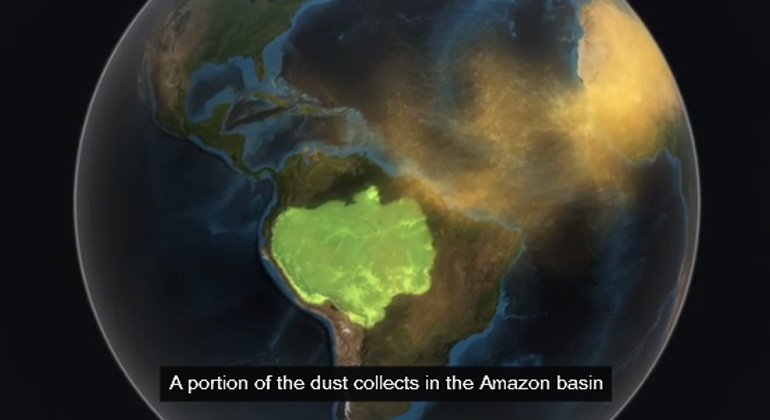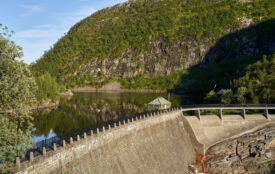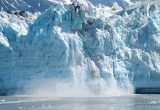Massive Amounts of Saharan Dust Fertilize the Amazon Rainforest
New study quantifies the connection between Earth’s largest temperate desert and its largest tropical rainforest.
The Sahara Desert and the Amazon rainforest seem to inhabit separate worlds. The former is a vast expanse of sand and scrub stretching across the northern third of Africa, while the latter is a dense green mass of humid jungle covering northeast South America. And yet, they are connected: every year, millions of tons of nutrient-rich Saharan dust cross the Atlantic Ocean, bringing vital phosphorus and other fertilizers to depleted Amazon soils.
For the first time, scientists have an accurate estimate of how much phosphorus makes this trans-Atlantic journey. A new paper, accepted for publication Feb. 24, 2015 in the journal Geophysical Research Letters, puts the number at about 22,000 tons per year, which roughly matches the amount that the Amazon loses from rain and flooding.
This phosphorus accounts for just 0.08 percent of the 27.7 million tons of Saharan dust that settles in the Amazon every year. The finding is part of a bigger research effort to understand the role of dust in the environment and its effects on local and global climate.
“We know that dust is very important in many ways. It is an essential component of the Earth system. Dust will affect climate and, at the same time, climate change will affect dust,” said lead author Hongbin Yu, an associate research scientist at the Earth System Science Interdisciplinary Center (ESSIC), a joint center of the University of Maryland and NASA’s Goddard Space Flight Center.
Of particular interest is the dust picked up from the Bodélé Depression in Chad. This ancient lake bed contains huge deposits of dead microorganisms that are loaded with phosphorus. Amazonian soils, in turn, are short on phosphorus and other critical nutrients that get washed away by the basin’s frequent and heavy rainfall. Thus, the entire Amazon ecosystem depends on Saharan dust to replenish these losses.
Yu and his colleagues analyzed dust transport estimates based on data collected by NASA’s Cloud-Aerosol Lidar and Infrared Pathfinder Satellite Observation (CALIPSO) satellite between 2007 and 2013. The team focused on Saharan dust transported across the Atlantic Ocean to South America and beyond, to the Caribbean Sea, because it is the largest transport of dust on the planet.
The team estimated the phosphorus content of Saharan dust by studying samples from the Bodélé Depression and from ground stations on Barbados and in Miami. They then used this estimate to calculate how much phosphorus gets deposited in the Amazon basin. Although the seven-year data record is too short to make conclusions about long-term trends, it is an important step toward understanding how dust and other windborne particles, or aerosols, behave as they move across the ocean.
“We need a record of measurements to understand whether or not there is a fairly robust, fairly consistent pattern to this aerosol transport,” said Chip Trepte, project scientist for CALIPSO at NASA’s Langley Research Center, who was not involved in the study.
Year by year, the pattern is highly variable. There was an 86 percent change between the highest amount of dust transported in 2007 and the lowest in 2011. Yu and his colleagues believe this variation is due to conditions in the Sahel, the long strip of semi-arid land on the southern border of the Sahara. Years of high rainfall in the Sahel were typically followed by low dust transport in the next year.
Although the mechanism behind this correlation is unknown, Yu and his team have a few ideas. Increased rainfall could mean more vegetation and therefore less soil exposed to wind erosion in the Sahel. A second, more likely explanation is that the amount of rainfall is related to the wind circulation patterns that sweep dust from both the Sahel and Sahara into the upper atmosphere, where it makes the long journey across the ocean.
“This is a small world, and we’re all connected together,” Yu said.








